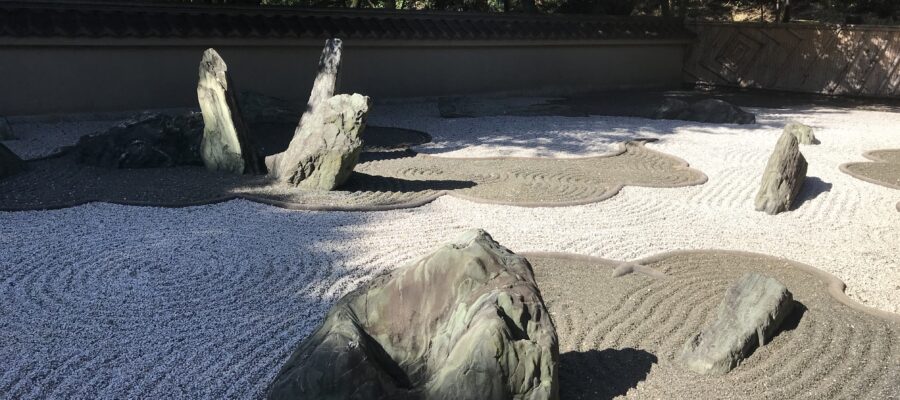圓光寺
今までお読みいただいた日本の庭園の紹介記事の中で、何度も龍の石組みについて書いてきました。今回は、それらをまとめて紹介します。最初は圓光寺の奔龍庭です。ここは石で龍を象形し、砂利で表現した雲の中から背ビレを出して泳いでいる様子が、ありありと出ています。ここまで写実的な石組は珍しいなと思いながら、しばらく眺めていました。
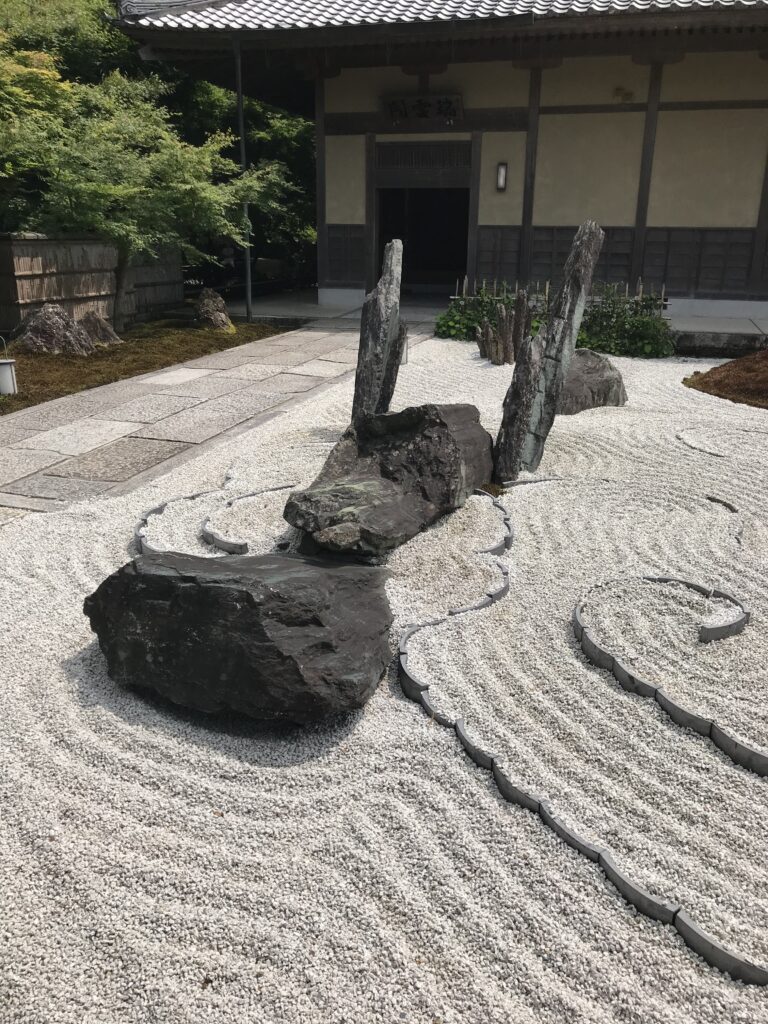
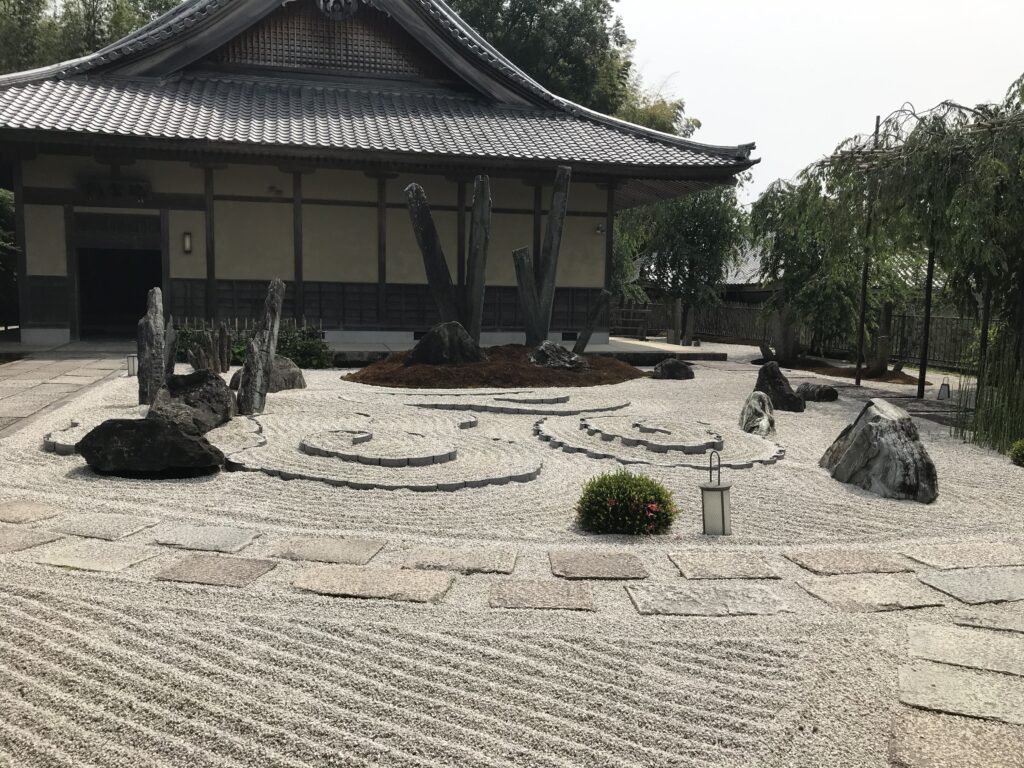
龍吟庵
次は、名作庭家、重森三玲さんが作庭した東福寺塔頭寺院の龍吟庵の西庭「龍の庭」です。この龍の庭を眺めると、龍が海中から黒雲を得て昇天する姿が、石組みにより表現されています。青石により2本の角が生えた龍の頭を中央に配置して、白砂は海、黒砂は黒雲、そして竹垣は稲妻模様を表しています。これは実に写実的で外国人の方にも受けると感じました。
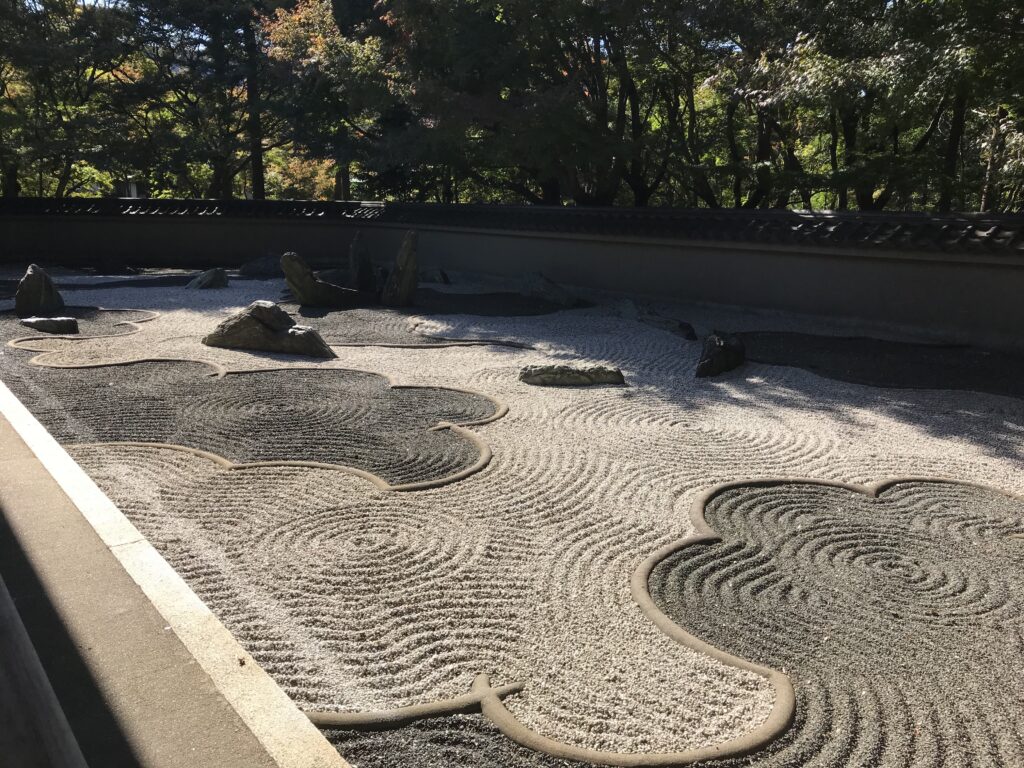
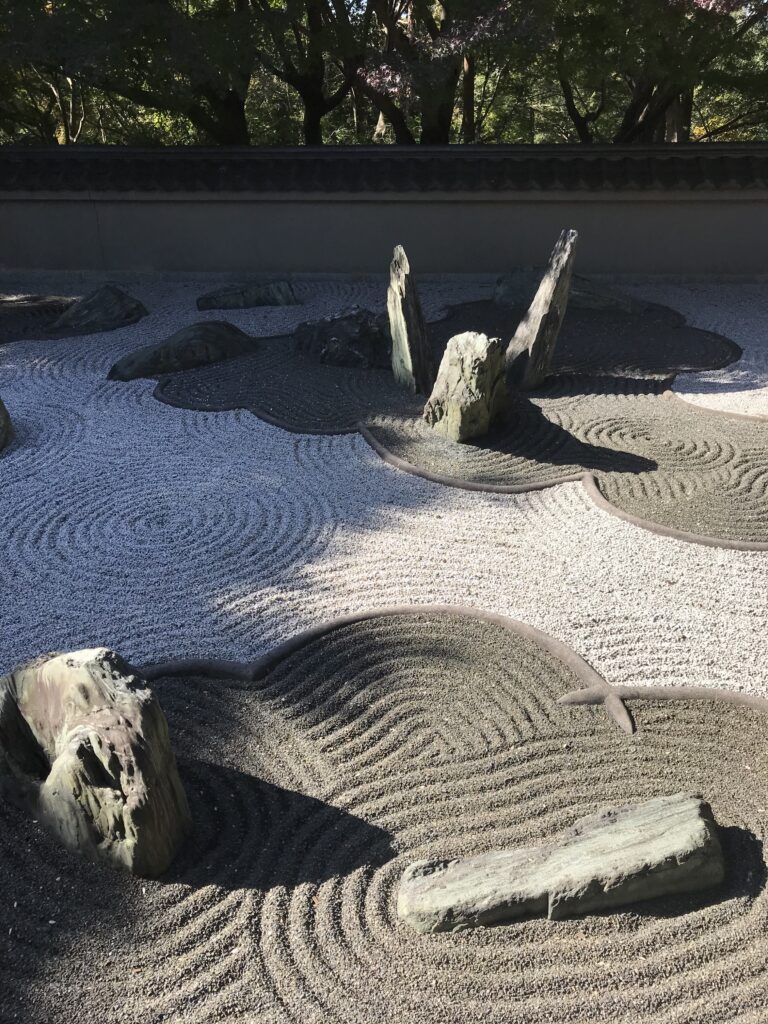
龍源院
次に、大徳寺の塔頭寺院の龍源院です。室町時代に相阿弥が作ったという説があるこの庭は、緑が深い杉苔で大海原を表現し、石組みが陸地を表していると言います。名前に竜が入っているからでしょうか、最近、このような庭を見ると、大海原を泳ぐ龍の背ビレが並んでいるのをイメージしてしまいます。
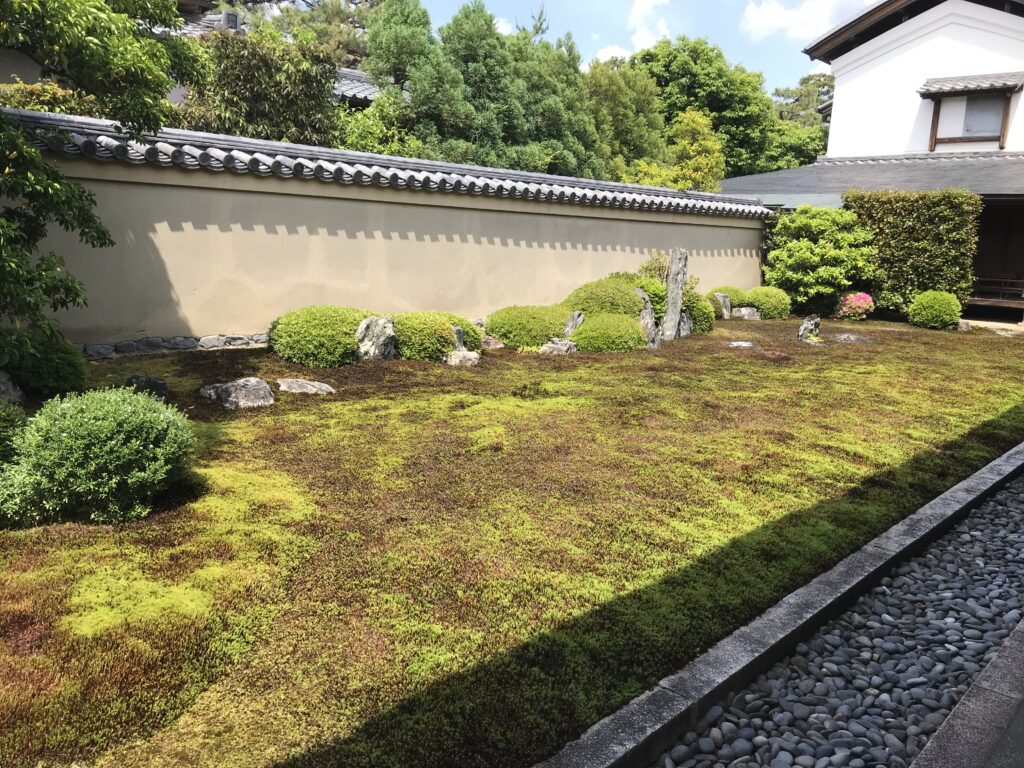
青蓮院
最後は、青蓮院の泉水庭です。この龍心地には2000貫(約7,500kg)あると言われる大石が、水面に浮かび上がっているように据えられています。「あたかも沐浴する龍の背中の見ゆるが如き」と、昭和の名作庭家である中根金作は表現しています。水も青っぽく見えるので、本当に四天相応の一つ、青龍が飛び出してきそうな様子です。(完)
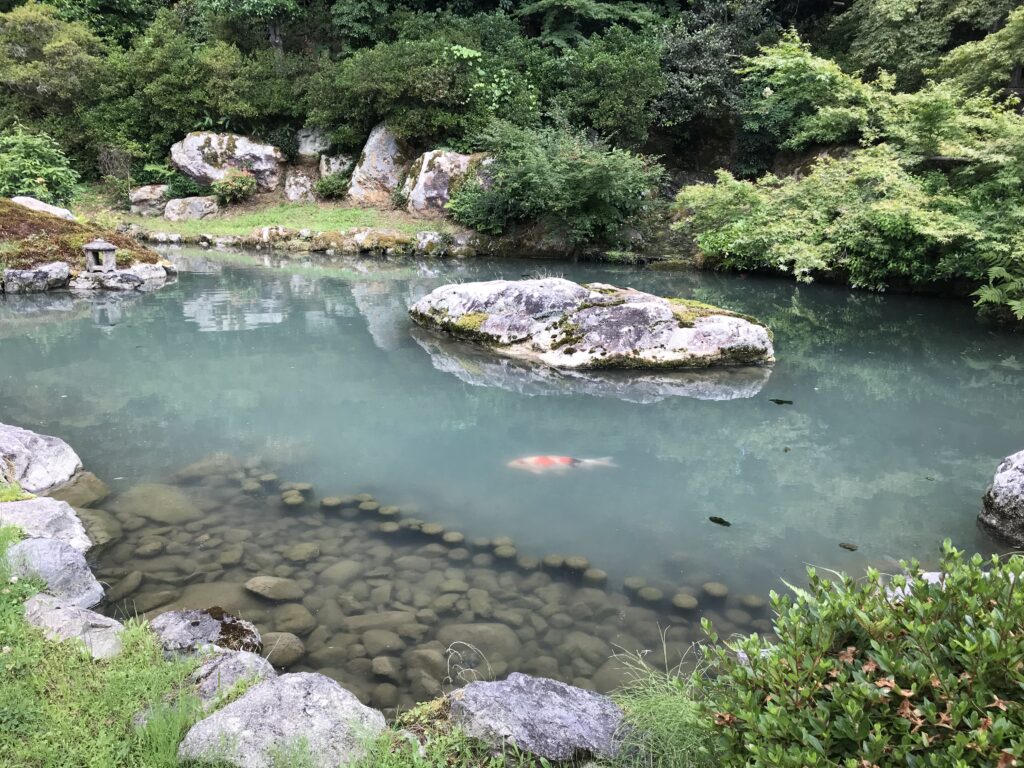
京都のお土産
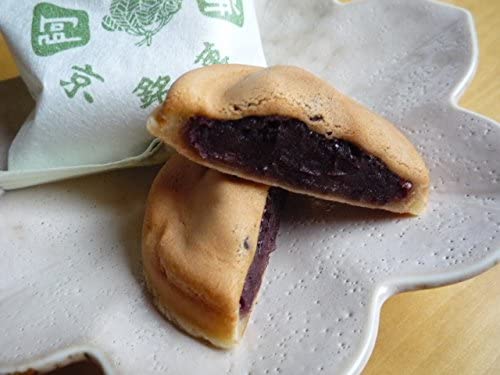
新品価格
¥4,845から
(2022/4/23 16:25時点)
Dragon Masonry
Enkouji Temple
In the articles you have read so far introducing Japanese gardens, I have written many times about dragon masonry. In this article, I introduce them all together. The first one is the Honryu Garden at Enkouji Temple. Here, a dragon is formed with stones and swims with its back fins protruding from the clouds expressed with gravel. I spent a while looking at it, thinking how rare it is to see such a realistic masonry.
Ryuginan
Next is the Ryu-no-niwa (Dragon Garden), the western garden of Ryuginan, a temple in the Tofukuji Temple, created by the famous gardener Mirei Shigemori. The view of this dragon garden depicts a dragon ascending to heaven from under the sea with a black cloud, which is represented by the masonry. The white sand represents the sea, the black sand represents black clouds, and the bamboo fence represents a lightning pattern. I felt that this was truly realistic and would be appreciated by foreigners.
Ryugenin
Next is Ryugenin, the sub-temple of Daitokuji Temple. This garden, which some say was created by Soami in the Muromachi period (1336-1573), is said to represent a large ocean with deep green cedar moss, while the masonry represents land. Perhaps it is because it has a dragon in its name, but lately when I see such a garden, I imagine the backs of dragons swimming in a line across the ocean.
Shorenin
The last is the fountain garden at Shorenin Temple. In this dragon garden, a large stone said to weigh 2,000 kan (about 7,500 kg) is placed as if it were floating on the surface of the water. Kinsaku Nakane, a famous Showa-era gardener, described the garden as “like seeing the back of a dragon bathing in the water.” The water also looks bluish, as if a blue dragon, one of the “Four Heavenly Kings,” is about to jump out of the water. (End)
Maçonnerie Dragon
Temple Enkouji
Dans les articles que vous avez lus jusqu’à présent présentant les jardins japonais, j’ai écrit à plusieurs reprises sur la maçonnerie de dragon. Dans cet article, je les présente tous ensemble. Le premier est le jardin Honryu du temple Enkouji. Ici, un dragon est formé avec des pierres et nage avec ses nageoires arrière dépassant des nuages exprimés avec du gravier. J’ai passé un moment à le regarder, en pensant qu’il est rare de voir une maçonnerie aussi réaliste.
Temple Ryuginan
Vient ensuite le Ryu-no-niwa (jardin du dragon), le jardin occidental de Ryuginan, un temple du temple Tofukuji, créé par le célèbre jardinier Mirei Shigemori. La vue de ce jardin du dragon représente un dragon qui monte au ciel depuis le dessous de la mer avec un nuage noir, qui est représenté par la maçonnerie. Le sable blanc représente la mer, le sable noir représente les nuages noirs et la barrière de bambou représente un motif d’éclairs. J’ai pensé que cela était vraiment réaliste et que les étrangers l’apprécieraient.
Temple Ryugenin
Ensuite, il y a Ryugenin, le sous-temple du temple Daitokuji. Ce jardin, dont certains disent qu’il a été créé par Soami à l’époque Muromachi (1336-1573), représenterait un grand océan avec de la mousse de cèdre d’un vert profond, tandis que la maçonnerie représente la terre. C’est peut-être parce que son nom contient un dragon, mais dernièrement, lorsque je vois un tel jardin, j’imagine le dos de dragons nageant en ligne à travers l’océan.
Temple Shorenin
Le dernier est le jardin de la fontaine du temple Shorenin. Dans ce jardin du dragon, une grande pierre dont on dit qu’elle pèse 2 000 kan (environ 7 500 kg) est placée comme si elle flottait à la surface de l’eau. Kinsaku Nakane, un célèbre jardinier de l’ère Showa, a décrit ce jardin comme étant “comme le dos d’un dragon se baignant dans l’eau”. L’eau semble également bleuâtre, comme si un dragon bleu, l’un des “quatre rois célestes”, était sur le point de sauter hors de l’eau. (Fin)
